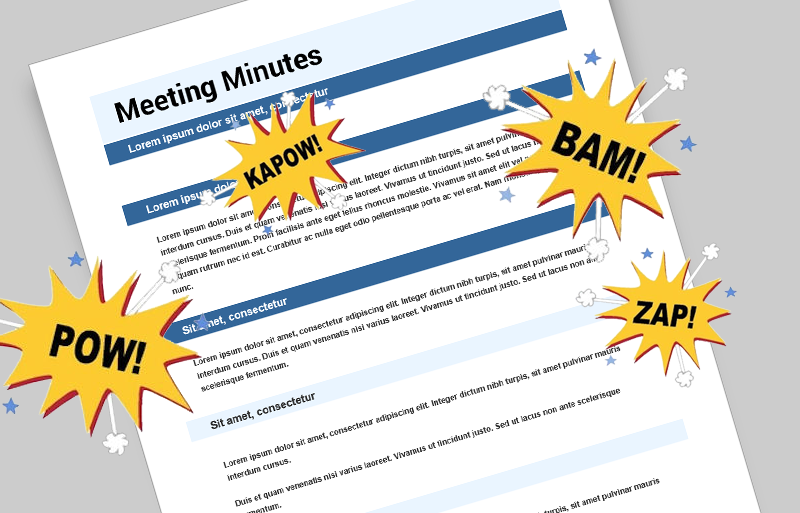Meeting minutes are often just as important as the meeting itself. But, your
meeting minutes need not document everything that occurred during the course of the discussion. Meeting minutes need certain key pieces of information to be an effective tool in moving the subject of the meeting forward. Use the following suggestions to provide a brief outline of the meeting and then use the minutes to be certain the meeting was worth the time invested.
Follow a Standard Outline:
- Purpose of the Meeting
- Who Attended
- Date and Time
- Key Points Discussed
- Decisions Made
- Scheduled Follow-up
1. The Purpose of the Meeting:
There is no point in holding a meeting if it not intended to accomplish something. The purpose need not be verbose just state what or why. Examples: Discuss Production Problems on XYZ Project, Determine Methodology to be used in Deploying the ABC Marketing Initiative. You want to be able to identify the meeting minutes when scanning paper copies, looking at computer file names, or email headers.
2. Who Attended:
This often does not change much from meeting to meeting; but, it is important to know the individuals who need to be copied on the
meeting minutes. Note those individuals who were absent if it is important to copy them or they received assignments as a result of meeting decisions.
3. Date and Time:
How long the meeting lasted is important information in determining how productivity was impacted by the meeting itself.
4. Key Points Discussed:
No need for long explanations, just list the significant
action items that were covered in the meeting. Unless a specific point was tabled for future discussion, you are generally looking to list only the items that resulted in some type of decision or assignment.
5. Decisions Made:
Probably the most important part of
meeting minutes is what is going to happen as a result of the meeting. If you are going to detail any portion of the meeting this is the place for exacting recall of decisions made. Who received assignments, what is expected to be accomplished as a result of the assignment, and when will the assignment be due. It is important to have all of these discussion items documented; the meeting minutes then become an effective tool to manage those aspects of the project.
6. Scheduled Follow-up:
This item should include the date and time of the next meeting, along with key points on the project timeline that will occur before that event. Using project management software that has the ability to incorporate meeting minutes can prove to be an invaluable tool in keeping track of assignments, their status, and the results the assignments produce.
Regardless of how the meeting was conducted, in-person, by telephone, or remotely online; it is important that the minutes present a brief, yet executable overview of the important content discussed.
